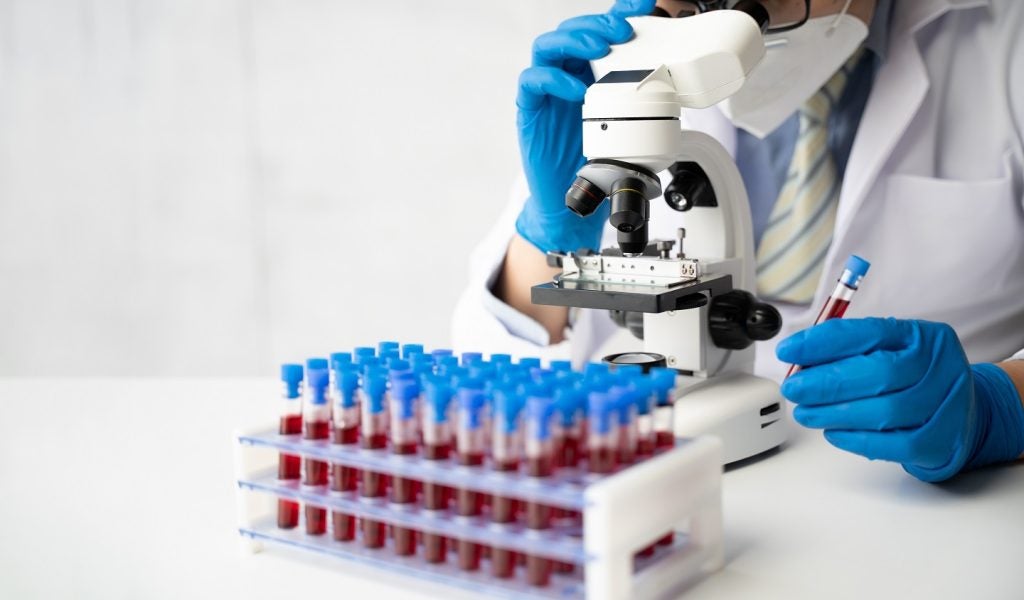
Parkinson’s is a progressive neurological condition that develops when nerve cells in the brain that produce the chemical dopamine stop working properly and then die. Symptoms including tremors, slowness of movement and rigidity start to appear when the brain can’t make enough dopamine to control movement properly.
The causes of Parkinson’s are unknown, but researchers believe a combination of environmental and genetic factors cause the dopamine-producing nerve cells to die. The number of people diagnosed in the UK is approximately 145,000, or one in 500, and that figure rises to about one in 100 among the over-60s.
At present, there is no cure and no definitive test for the condition, with clinicians diagnosing patients by observing symptoms.
Who is Joy Milne, the ‘super smeller’?
For Joy Milne, a visit to a Parkinson’s disease support group meeting with her husband Les proved to be a life-changing moment. The retired nurse noticed that all the patients gave off the same musky odour she had first detected on Les more than a decade before he was diagnosed at the age of 45.
She mentioned her discovery to Tilo Kunath, a neurobiologist at Edinburgh University who studies the neurodegenerative disorder. His interest piqued, Kunath had Milne sniff T-shirts worn by either healthy people or those with Parkinson’s. She identified all those worn by the patients and said one more T-shirt bore the same scent. Eight months later, the wearer was diagnosed with the disease.
For the past four years, she has worked with scientists at Manchester University. It is hoped that the research – part-funded by Parkinson’s UK – will lead to the development of an early diagnosis test.
How well do you really know your competitors?
Access the most comprehensive Company Profiles on the market, powered by GlobalData. Save hours of research. Gain competitive edge.

Thank you!
Your download email will arrive shortly
Not ready to buy yet? Download a free sample
We are confident about the unique quality of our Company Profiles. However, we want you to make the most beneficial decision for your business, so we offer a free sample that you can download by submitting the below form
By GlobalDataHow were her olfactory abilities tested?
Scientists already know that Parkinson’s disease can cause excessive production of sebum, a natural waxy, lipid-based bio fluid that moisturises and protects the skin but makes sufferers more likely to develop the skin complaint seborrheic dermatitis.
Sebum samples were taken from the upper backs of 64 volunteers, some with Parkinson’s and some without, and given to Milne for analysis. In order to identify exactly which biomarkers were giving off the scent she was picking up, researchers at the Manchester Institute of Biotechnology (MIB) used mass spectrometry to identify the molecular compounds that give the condition its unique odour.
Analysis of the sample data revealed the presence of hippuric acid, eicosane and octadecanal – which indicates the altered levels of neurotransmitters (chemical messengers) found in Parkinson’s patients – along with several other biomarkers in the sebum of those people with the condition.
Is a skin-swab test for Parkinson’s now possible?
By considering the levels of the molecules identified in the test samples, the Manchester team, in collaboration with Milne, was then able to generate a model that can now identify and diagnose Parkinson’s at all stages of the disease.
“Now we have proved the molecular basis for the unique odour associated with Parkinson’s we want to develop this into a test,” said , professor of mass Spectrometry in MIB Perdita Barran.
“This could have a huge impact not only for earlier and conclusive diagnosis but also help patients monitor the effect of therapy. We hope to apply this to at risk patient groups to see if we can diagnose pre-motor symptoms, and assist with potential early treatment.”
“We acknowledge this is a small study but it does open the door to the development of a non-invasive screening test for Parkinson’s, potentially leading to earlier detection for thousands of patients,” added Dr Monty Silverdale, consultant neurologist and honorary senior lecturer in neuroscience at Manchester University.
Could other diseases also be ‘sniffed’ out?
Milne’s ability to sniff out disease is not limited to Parkinson’s; the 68-year-old ‘super smeller’ is also able to smell Alzheimer’s (smells vaguely of vanilla) and certain cancers (a more earthy odour). She is working with the researchers to identify chemicals that produce a signature odour for tuberculosis.
Milne’s ability could be linked to the fact that she has synaesthesia, a neurological condition that results in a joining or merging of senses that aren’t normally connected. This means she can visualise the flow of smells and even experience them as sensations. “Some smells make my back go cold,” she said. She has to avoid soaps and make-up in supermarkets because they are too overpowering.
“I’m in a tiny, tiny branch of the population – somewhere between a dog and a human,” she jokingly told the BBC last year. Milne has been named in a paper on the research published in ACS Central Science and been made an honorary lecturer at Manchester University in recognition of her work.
What more research needs to be done?
The scientists subsequently teamed up with researchers in Austria who study people with REM (rapid eye movement) sleep disorders in an effort to discover whether the test can spot Parkinson’s before doctors can. The Guardian reports that a separate study found people with a specific kind of such disorder have a 50% risk of developing Parkinson’s in later life.
“If we can detect the disease early on, that would be very good news,” commented Barran. “It would mean we have a test that picks it up before motor symptoms appear.”
In parallel, more than 1,000 Parkinson’s patients and hundreds of healthy people are having their sebum analysed in order to assess how reliable the test is. Scientists will also look at whether changes in the odour reflect the progression of the disease, or even different forms of Parkinson’s.
Speaking to coincide with the publication of the Manchester University findings in ACS Central Science, Professor David Dexter, deputy director of Research at Parkinson’s UK, said: “More research is needed to find out at what stage a skin test could detect Parkinson’s, or whether it is also occurs in other Parkinson’s related disorders, but the results so far hold real potential.
“Both to change the way we diagnose the condition and it may even help in the development of new and better treatments for the 145,000 people living with Parkinson’s in the UK.”






